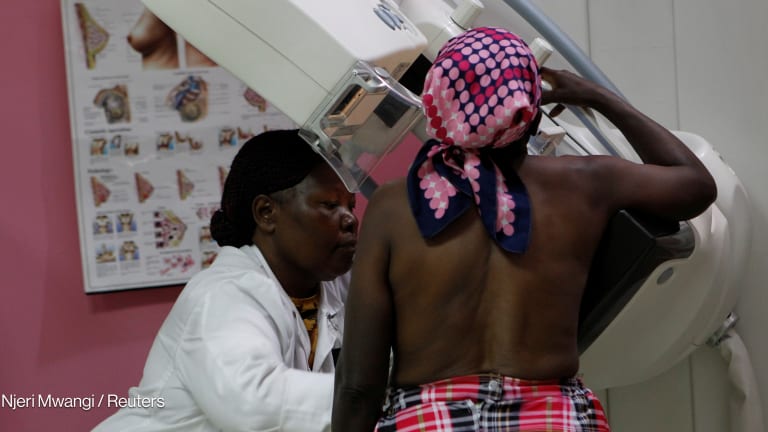
MUMBAI, India — When World Bank President Jim Yong Kim announced the human capital index at the bank’s spring meetings this April, he anticipated the rankings to be “wildly controversial.” Delivering on his prophecy, India — which ranked 115th out of 157 when the index was launched last week — rejected the results.
The HCI aims to determine national levels of human capital by using survival and stunting rates as a measure of health, and quality-adjusted learning as a measure of education, to indicate the potential productivity of children born in a given country. India scored 0.44, lower than the average of 0.56, suggesting a child born in the country today will only be 44 percent as productive as she could be if she had complete health and education. The country brief points out that India’s score “is lower than the average for its region and income group.”
World Bank human capital index — just another ranking?
President Jim Kim wants the index to change the bank's relationship with governments — and with the International Monetary Fund. Will he succeed?
In a statement, the Indian finance ministry said the HCI has “major methodological weaknesses, besides substantial data gaps” and declared it would “ignore” the ranking. But experts called on the government to acknowledge its failures and take steps to improve health and education outcomes.
Purnima Menon, senior research fellow at the International Food Policy Research Institute in New Delhi, said indices such as the HCI are necessary. “Often you have to make people uncomfortable to prompt a discussion,” she said.
One of India’s major criticisms of the HCI is that it measures outcomes rather than processes.
Comparing the HCI to the World Bank’s “Ease of Doing Business Index,” in which India’s performance has been steadily improving over the years, the government statement said: “Adult survival rates, stunting, and under-5 mortality are outcome indicators [which] will change at a relatively slow rate as compared to process indicators used in the Ease of Doing Business.”
Menon, however, argued this is a faulty comparison, as the HCI focuses on concrete outcomes whereas the Business Index aims to highlight processes that facilitate business. “An index like the HCI looks at what is the state of play right now, as measured by set indicators like health and education outcomes,” she said.
India’s performance in the United Nations Development Programme’s Human Development Index, another measure of human capital, also hasn’t improved much over the years, experts said. This year, India ranked 130 out of 189 countries.
In challenging the methodology of the HCI, India also challenged its premise. It claimed such slow-moving indicators would do little to motivate efforts toward an improved ranking, and that the indicators used do “not reflect the key initiatives that are being taken for developing human capital in the country.”
It claimed the data used for measuring education quality is not accurate, challenging the veracity of the Programme for International Student Assessment and Trends in International Mathematics and Science Study scores used in the HCI. That was in part because the PISA scores date back to the last time the assessment was done in India in 2009.
Still, a forthcoming paper from the Center for Global Development, a Washington, D.C.-based think tank, used a synthetic test made up of different international assessments on 4,000 children in the Indian state of Bihar. The results weren’t very different from the 2009 PISA test.
Anit Mukherjee, a policy fellow focusing on education at CGD who co-authored the paper, sees this as an opportunity for the government to shift its focus from inputs to learning outcomes. “Can learning be the center of India's education policy going forward? There are good examples in different states within the country, and there’s a lot to learn from them,” he said.
Despite India’s public rejection of the HCI, Menon thinks there should be introspection within the government. “Ten years ago, there was almost denial of childhood stunting, saying these are international standards that are not right for India. However, it is now accepted that it is indeed an issue, and stunting is front and center in the national nutrition strategy,” she said. Menon is hoping for a similar approach with the HCI.
Mukherjee agrees. “The government could have said ‘yes, this is a challenge and here are the steps we are taking to bring about change,’” he said. “This is a collective responsibility and a national shame, and an issue which can be solved through effective policymaking and implementation.”
Catch up on what happened at the World Bank Annual Meetings in Indonesia, where Devex reporters Michael Igoe and Sophie Edwards were on the ground.








